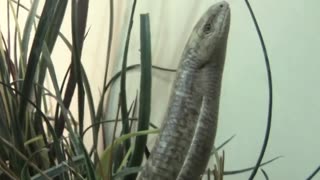Baby Eurasian Collared Dove Every Day, From Egg to Leaving The Nest
It was interesting watching this collared dove grow up for the day it hatched until it left the nest.
Eurasian collared doves, scientifically known as Streptopelia decaocto, are medium-sized doves native to Europe and Asia. However, they have also successfully established populations in other parts of the world, including North America, where they are often simply referred to as "collared doves."
Appearance: Eurasian collared doves have a distinctive appearance with a pale gray to light brown plumage. They have a black collar on the back of their necks, which gives them their name. Their tails are long and squared off at the tip. They have bright red eyes and a small black bill.
Habitat: Originally native to scrublands, open woodlands, and urban areas of Europe and Asia, Eurasian collared doves have adapted well to urban and suburban environments. They are often found near human habitation, including parks, gardens, and agricultural areas.
Behavior: These doves are often seen in pairs or small groups, but they can form larger flocks, especially around food sources. They are relatively docile birds and are known for their gentle cooing calls, which are often heard in the early morning or evening.
Diet: Eurasian collared doves primarily feed on seeds, grains, and fruits. They are ground feeders and can often be seen foraging on the ground for food.
Breeding: They are prolific breeders, with the ability to breed throughout the year in suitable climates. They build simple nests made of twigs and grasses in trees, shrubs, or on man-made structures like buildings or utility poles. A typical clutch consists of two white eggs, and both parents share the responsibilities of incubating the eggs and raising the young.
Invasive Species: Eurasian collared doves have been introduced to many parts of the world, including North America, where they have become established and, in some areas, invasive. Their rapid population growth and ability to adapt to a wide range of habitats have led to concerns about their impact on native bird species and ecosystems.
If you would like to create videos like I do, and monetize them, please use my referral link to register: https://rumble.com/register/MidwestGardener1/
I will get a small percentage, then once you register, you can refer people too.
-
 0:47
0:47
Observing Nature
2 months ago $0.96 earnedEuropean Legless Lizard. Sheltopusik, Ophisaurus apodus. (Not a Snake)
3142 -
 LIVE
LIVE
SNEAKO
3 hours agoSNEAKO X MYRON DESKTOP STREAM!
9,797 watching -
 1:31:24
1:31:24
The Anthony Rogers Show
12 hours agoEpisode 225 - JT Barnett (Producer of Tiger King)
5.6K -
 31:30
31:30
Degenerate Plays
1 day agoThe True American Sniper Is At Half-Mast - Call Of Duty Modern Warfare Remastered : Part 10
6.14K1 -
 2:24:27
2:24:27
WeAreChange
3 hours agoTrump Has A Clear Path To Victory But It's A TRAP...
29.1K20 -
 2:02:43
2:02:43
Kim Iversen
4 hours agoAzov Battalion Enacted a Silent Coup in Ukraine | Jack Posobiec: The Secret History Of Communist Revolutions
29.9K90 -
 1:43:19
1:43:19
The Nima Yamini Show
3 hours agoMilo Yiannopoulos X Nima Yamini
18.1K16 -
 2:11:25
2:11:25
Robert Gouveia
7 hours agoJack Smith in DANGER; Bragg's BIG Sentencing PROBLEM; Classified Docs DISMISSAL Fight
56.9K61 -
 59:41
59:41
The StoneZONE with Roger Stone
11 hours agoKash Patel Joins Roger Stone To Talk About The Best Week In Donald Trump's Life | The StoneZONE
29.9K31 -
 56:42
56:42
Edge of Wonder
8 hours agoIs Japan’s “Atlantis” Yonaguni Monument Man-Made? New Evidence Emerges
29.8K10